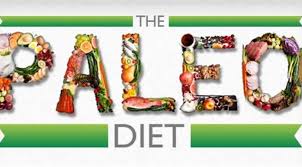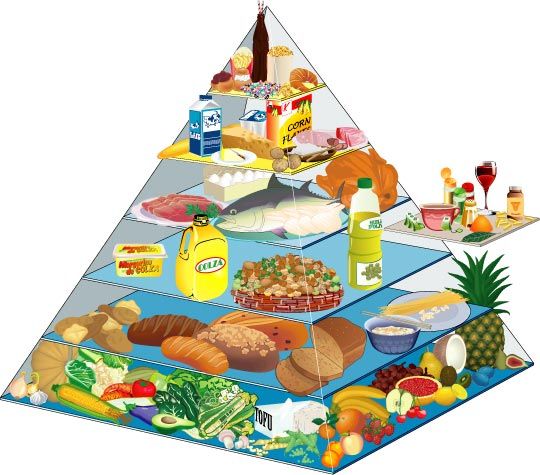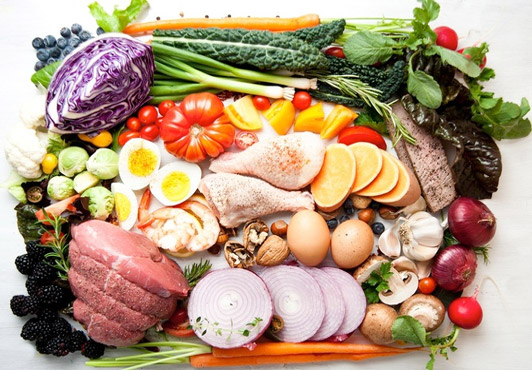 The Paleolithic diet is that early humans ate spontaneously, naturally. You hear about that from Dr. S. Boyd Eaton published in 1985 an article entitled Paleolithic Nutrition in the prestigious New England Journal of Medicine. Radiologist and medical anthropologist, Dr Eaton then issued the opinion that the ideal diet would correspond to that of our ancestors of the Stone Age. As far as one can judge from current populations even as then, it seems that our ancestors did not know the degenerative diseases. We even believe that their excellent physical condition would allow them to easily compete with modern athletes.
The Paleolithic diet is that early humans ate spontaneously, naturally. You hear about that from Dr. S. Boyd Eaton published in 1985 an article entitled Paleolithic Nutrition in the prestigious New England Journal of Medicine. Radiologist and medical anthropologist, Dr Eaton then issued the opinion that the ideal diet would correspond to that of our ancestors of the Stone Age. As far as one can judge from current populations even as then, it seems that our ancestors did not know the degenerative diseases. We even believe that their excellent physical condition would allow them to easily compete with modern athletes.
Dr Eaton’s theory states that it is our genes that determine our nutritional needs. As the human genome have changed as 0.02% by more than 40 000 years, is to say that we have the same genes as our prehistoric ancestors. Therefore, the power of that time we should altogether.
Since 1985, various scientists have begun to study this time and determined what were then feeding practices of hunter-gatherers. One of these researchers, Loren Cordain, PhD in physical education, published a book, adapted to American culture, which describes the diet as we should follow in our time.
Loren Cordain is not the first to highlight the benefits of the diet of our ancestors. Indeed, a prominent French doctor, Dr Jean Seignalet, who died in 2003, in 1996 published a book on the ancestral diet, entitled Power or third medicine. His book has just been reissued for the fifth time. During his career, Dr. Seignalet used the ancestral diet with great success against autoimmune diseases such as multiple sclerosis and rheumatoid arthritis as well as diseases that conventional medicine has difficulty treating like fibromyalgia.
The main principles
Goals:
• Weightloss.
• Improved general health.
• Disappearance of fatigue (more energy).
• Disappearance of digestion problems and acid reflux.
• sinus clearance, disappearance of morning stiffness, normalization of bowel functions (for some people).
• Prevention of many diseases: cardiovascular disease, osteoporosis, X syndrome (type 2 diabetes, hypertension, hypertriglyceridemia, obesity).
• Possible relief from certain autoimmune diseases: celiac disease, dermatitis herpetiformis, rheumatoid arthritis, multiple sclerosis, Sjogren’s syndrome.
The outline
The Paleolithic diet altogether removes two of the four major food groups, dairy products and cereals (including bread). It is part of the low-carb diets (low carb). It comprises 22% to 40% carbohydrates, and 19% to 35% protein, and 28% to 47% lipids. In comparison, typical North American diet comprises 50% to 60% carbohydrate.
The foods
• All lean meats, poultry, fish and seafood, as well as lesoeufs.
• All fruits and vegetables poor in starch.
• All nuts and seeds (sunflower seeds, almonds, etc.).
Foods in moderation
• cold pressed oils.
• The lawyers.
• Tea, coffee and alcoholic beverages.
• Dried fruits.
Foods to remove
• All grain products.
• All legumes.
• All dairy products.
• All processed or canned products.
• All starchy vegetables (potatoes, cassava, yams, etc.).
• Fatty meats.
• Salty foods.
• Sugar.
• Fizzy drinks.
With this scheme, it is not necessary to count the grams of carbohydrates or even the calories you consume. The main rule is to stop eating when we are full.
Shade
According to the theory, we can adhere to this diet by giving some flexibility, that is to say by granting one, two or at most three meals “for our liking” a week. These are a few meals with foods “not approved”, they serve as a safety net and facilitate the adoption of this new lifestyle.
Mechanisms of action
1- Alleged
According to the theory, the different aspects of the diet result in several benefits. Here they are, in relation to every aspect.
Effects of protein lean meats, abundant in the Paleolithic diet
• Burn more calories through higher thermic effect of protein compared to carbohydrates and fats.
• Achieve faster and keep longer satiety.
• Reduce the “bad” cholesterol (LDL), triglycerides and homocysteine, while increasing “good” cholesterol (HDL).
• Improve insulin metabolism.
• Lower blood pressure.
All these effects would facilitate weight loss and protect cardiovascular disease.
Effects of plenty of fruits and vegetables
• Restore the acid-base balance of the diet by promoting a ratio sodium / high potassium. The more diet contains potassium compared to sodium, the more it is acid-base balance, that is to say neither too acidic nor too alkaline. Fruits and vegetables are high in potassium while sodium is associated with chlorine in salt. Or chlorine is a mineral acid. Sodium / high potassium ratio helps prevent high blood pressure, gallstones, asthma, osteoporosis, certain cancers and other chronic diseases associated with a diet high in sodium.
• Preventing cancer through their richness in antioxidants.
Effects of a high intake of omega-3 fatty acids
• Lighten the blood, prevent arrhythmia and reduce blood triglyceride levels.
Effects of a high intake of fiber from fruits, vegetables, nuts and seeds
• Reduce blood cholesterol.
• Encourage bowel regularity.
2- Demonstrated
First, according to an editorial published in 2000 in the American Journal of Clinical Nutrition4, the Paleolithic diet proposed by Loren Cordain does not correspond to what our ancestors ate all of that time. It seems that some were more herbivores than carnivores. The hunt was only prevalent in populations living at high altitude. Moreover, our ancestors, in comparison with us, do not have the freedom to choose what they ate. They took what was available and this varied greatly from place to place and from one moment to the next year. Also, the fact that hunter-gatherers lived a life very demanding in terms of energy expenditure and that most wild foods have a low energy density has probably been instrumental in the low incidence of civilization diseases this type of population.
Regarding the allegations about the benefits of fruit, vegetables and omega-3contenus in the Paleolithic diet, they are recognized and scientifically proven.
By cons, in terms of intake high in lean protein, although they act on satiety, the metabolism of insulin and reducing weight, we do not know the long impacts term, especially on the kidney function. One can also consider the consequences of a diet without soluble fiber (found in whole grains and legumes), including the intestinal flora. Fruits and vegetables, abundant in the Paleolithic diet, contain mainly insoluble fiber.
Advantages and disadvantages
Satiety and welfare
Because only two food groups of four are allowed (meat and alternatives, and fruits and vegetables), this diet can be terribly boring. Other low-carb diets like Atkins and Miami, allow to reintroduce grain at some point, which is not the case here. Although the Paleolithic diet could cover all our nutritional needs (except vitamin D) is the monotony that makes little long-term practical.
By cons, its high content of protein and fiber quickly gives the feeling of satiety.
In practice
With the exception of vegetarian restaurants, this type of diet can be followed everywhere since meat, poultry, fish, eggs, seafood, fruits and vegetables are foods readily available. By cons, lots of appetizers, main dishes, side dishes, sauces and all most desserts have to be set aside. This diet requires great discipline and a lot of control, because food are major restrictions.


